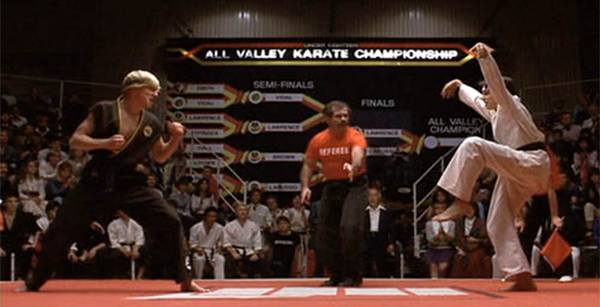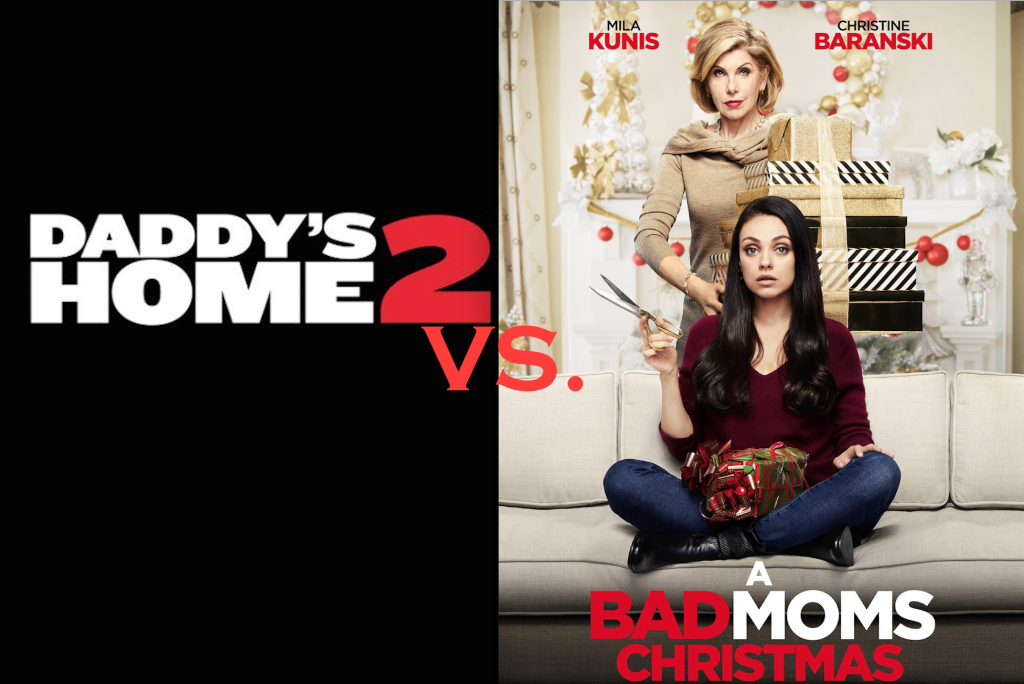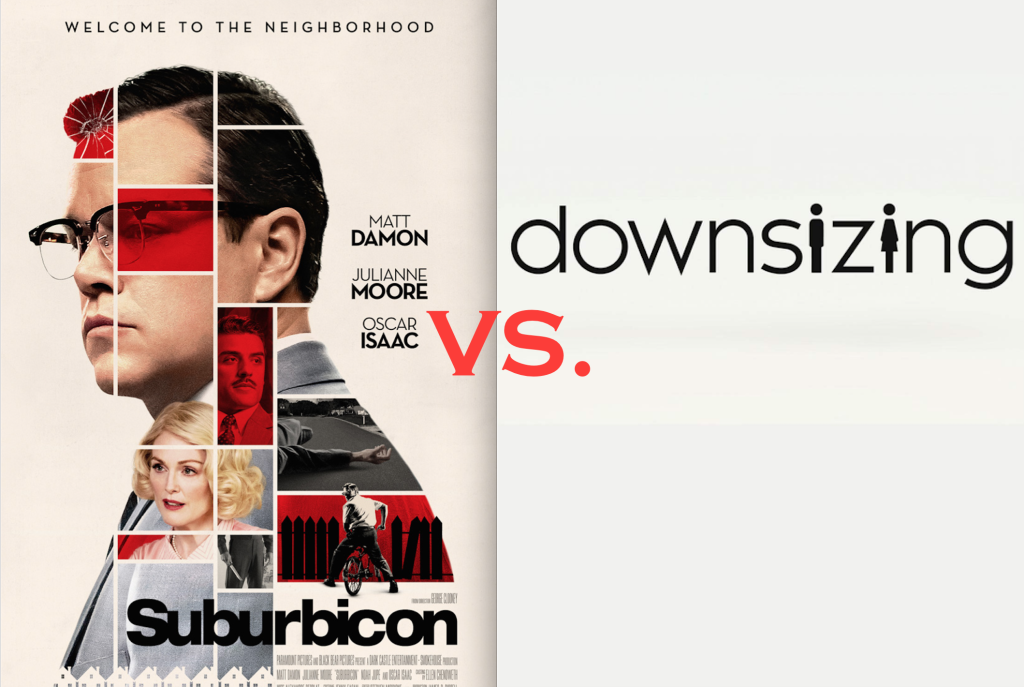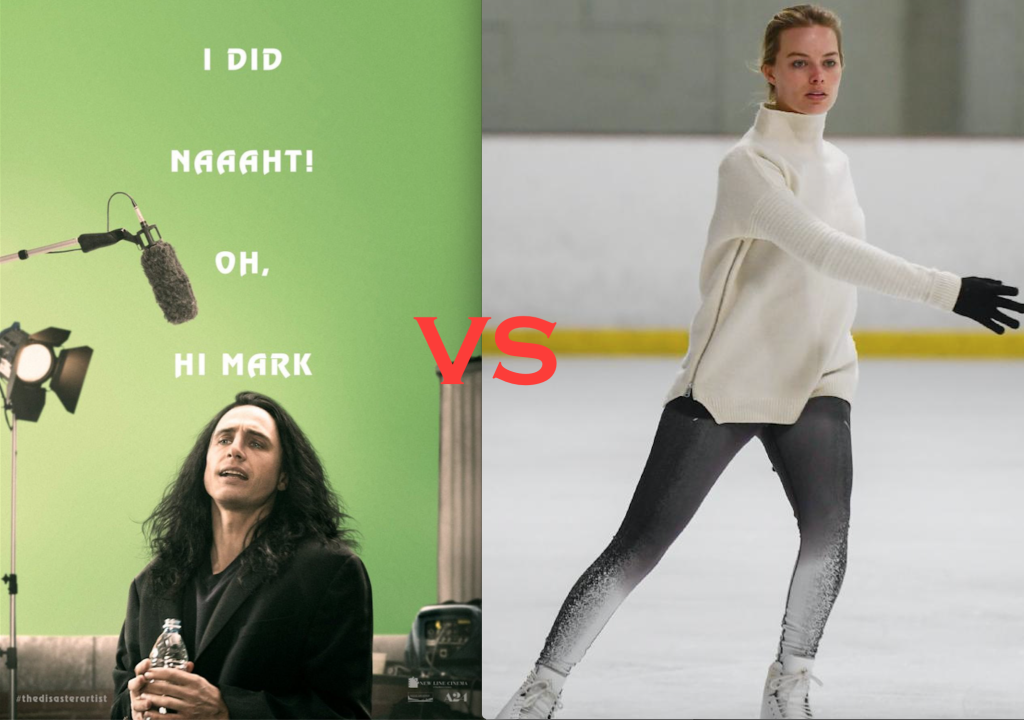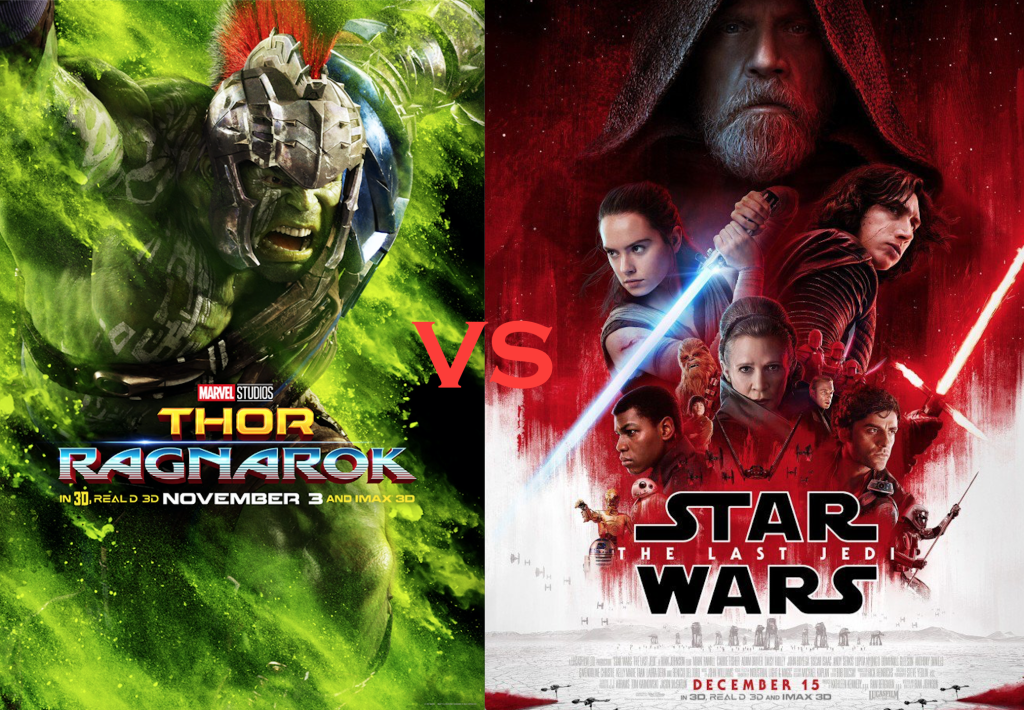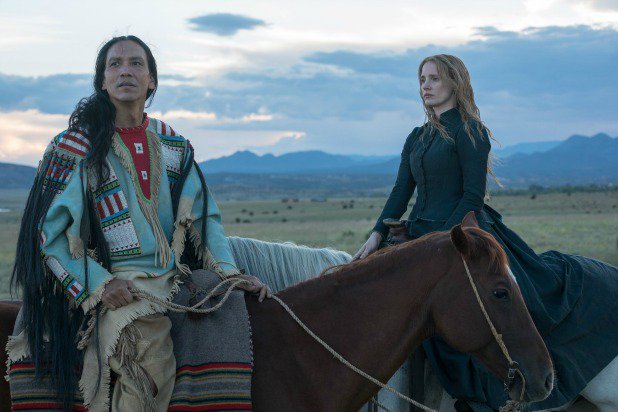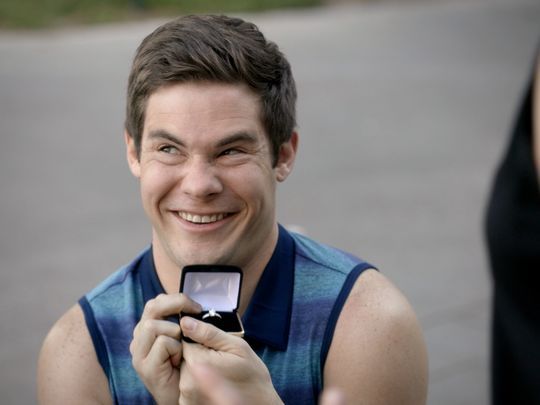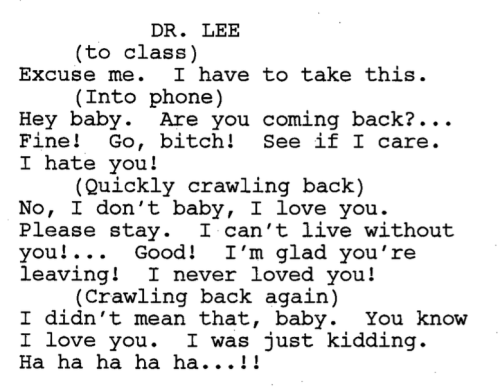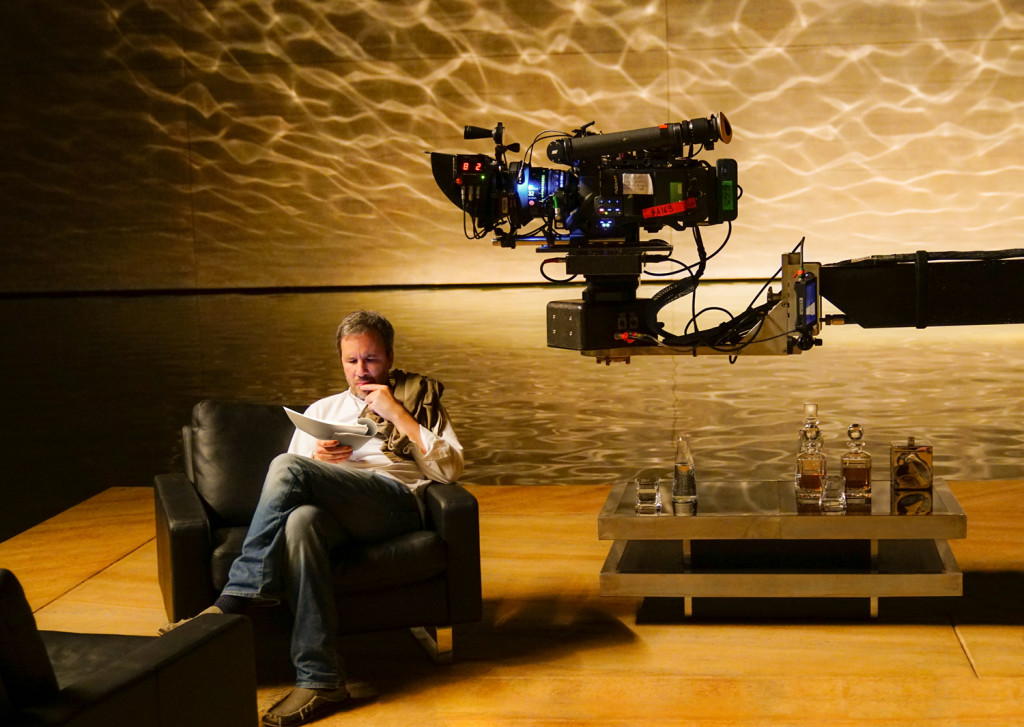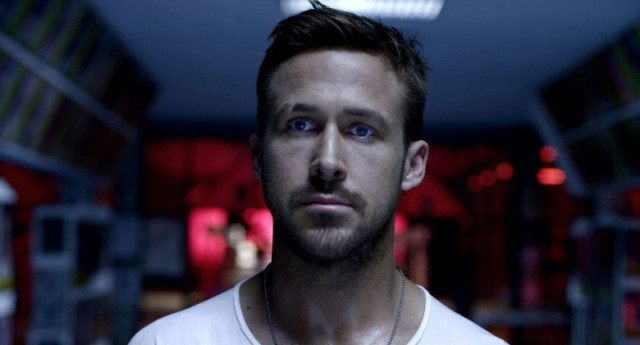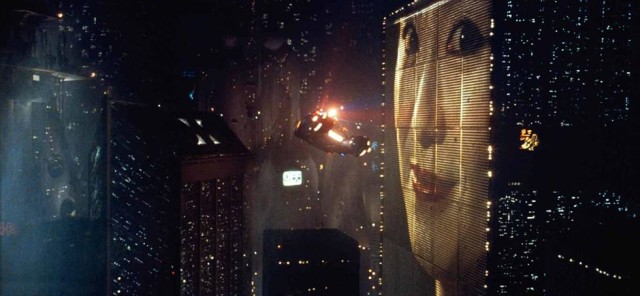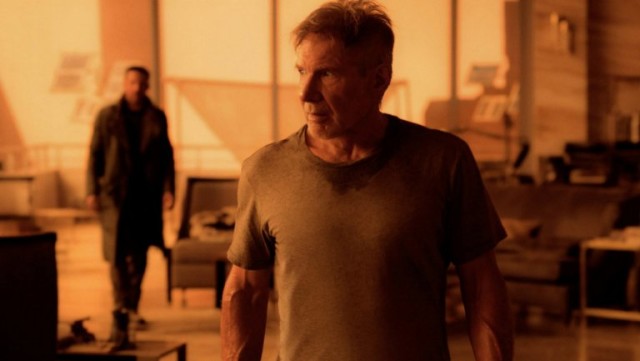Hollywood’s favorite game is the post-weekend box office analysis. OF COURSE they knew that Movie A was going to be huge. OF COURSE they knew that Movie B was going to bomb. Not only that, but they’ve got a whole host of reasons for why a movie succeeded or failed. Rarely do you have people coming out BEFORE THE WEEKEND saying, “This movie is going to be huge” or “This movie is going to bomb.” Nobody puts their money where their mouth is since being wrong about a film’s box office in this town is akin to being videotaped kicking puppies.
Well folks, Carson don’t play that game! I’m ready to tell you what’s going to float and what’s going to sink BEFORE THE WEEKEND IS OVER. And to spice things up, I’m going to pit movies against each other. One will succeed, one will fail. Which one is the hammer? Which one the nail? Look at that. A little Scriptshadow poetry in action. As is my typical warning to anyone reading this article: Prepare to be triggered. My philistine opinions don’t always match up with the masses. You’ve been warned. Now let’s do it!
MAINSTREAM COMEDY SHOWDOWN: DADDY’S HOME 2 VS. A BAD MOMS CHRISTMAS
What. The. Fuck. I mean, seriously. I want to know who was in the room when they decided that “Christmas” would be the ideal subject matter to explore a second Bad Moms. Comedy is supposed to be IRONIC! That’s why the first movie worked so well. When people think of moms, they think nice and sweet. Not “bad.” Hence: Irony. 10,000 things come to mind when you say “Moms,” before Christmas. This is such an odd choice that I don’t even know what to say about it.
On the flip side, Daddy’s Home took what was already a good premise and elevated it. Yes, it’s true, my friends. I’m a closet Daddy’s Home fan. There are many of us out there, hiding in our minivans, afraid to come out lest we be assaulted by Goddard and Scorsese disciples for not being true cinema geeks. But Will Ferrel hasn’t found a more perfectly suited role for his talents in five years. And the choice to make John Lithgow his ever-loving uber-geeky dad? Genius.
Daddy’s Home 2: Monster Hit
Bad Mom’s Christmas: Disappointing Failure
WINNER: DADDY’S HOME 2!
MASTER VS. PROTEGE SHOWDOWN: DOWNSIZING VS. SUBURBICON
Two projects that have some crossover elements. Matt Damon is in both films. Clooney starred in Payne’s The Descendants. George Clooney really really really wants to be the third Coen brother (Suburbicon is a Coen Brothers script). He really wants to be that hip unique director a la Alexander Payne. But he just isn’t. He doesn’t have the storytelling skill or the offbeat sensibilities to pull it off. Suburbicon didn’t work when I read it and all I’ve heard since is that it’s a huge mess. Clooney needs to stop directing and utilize those gene lottery winning looks by staying in front of the camera for as long as he can get away with it.
Now Downsizing happens to be a script I didn’t like either. But Alexander Payne’s been workshopping this screenplay for a decade now and I’m going to give him the benefit of the doubt based on his past work. Downsizing is the epitome of the “strange attractor” principle we talk about so much on this site. It’s so weird and so unlike anything anybody’s seen before, I think audiences are going to show up to make this a surprise hit. Dare I say it will be Alexander Payne’s biggest hit ever.
Downsizing: Surprise Hit!
Suburbicon: Critical and Box Office Failure
WINNER: DOWNSIZING!
ASS-KICKING FEMALE SHOWDOWN: MOLLY’S GAME VS. THREE BILLBOARDS OUTSIDE EBBING, MISSOURI
Holy donkey cajones. Did I hear that Three Billboards actually won best picture at the Venice Film Festival? Either there were no other movies in contention or it was one of those classic “Eccentric Jury Member” make-ups where of course they voted a bad movie into the top prize. They had to in order to keep their “artist” street cred. This script sucked. And it didn’t even make sense. Half the time you’re wondering if it’s a true story. When you realize it isn’t, you wonder why they made it in the first place. It was just such a dumb idea. I’m guessing that whatever praise this movie receives is based on the fact that Francis McDormand is great in the role. And I’d expect nothing less from her. But even great performances can’t overcome bad scripts. And this was bad.
Meanwhile, over on Planet Sorkin, the center of the screenwriting universe, Sorkin shows how good writers actually write good scripts. Molly’s Game is a tour-de-force and it FINALLY gives the most invisible A-list actress in the world, Jessica Chastain, a role where she can break out and show what she’s made of. The only question with Molly’s Game was whether Sorkin could direct or not (this is his first directing gig) and based on the kinetic exciting trailer, my conclusion is that he did a damn fine job.
Three Billboards: Will die a quick death at the box office then fool some people into seeing it later when McDormand gets nominated. It may scrape up a few more dollars, but nobody’s going to like this enough to recommend it.
Molly’s Game: Will become a larger-than-expected hit and a big player at the Oscars.
WINNER: MOLLY’S GAME!
QUIRKY COMEDY SHOWDOWN: THE DISASTER ARTIST VS. I, TONYA
There isn’t a screenplay whose success I understood less in 2017 than I, Tonya’s. They took a made-for-tv docudrama, turned it into a feature, then added an Office-style mockumentary format? Every page was a “WTF is going on here??” moment. Bringing in the most beautiful actress working today, Australian Margot Robbie, to play an American chain-smoking puffy-faced self-described white trash queen only added to the absurdity of the project. It doesn’t bode well that Robbie admitted she had no idea this was a true story when she signed on. I don’t understand this project! Someone help me! Even scripts I’ve hated, I can still tell you why they got made. Three Billboards, for example. Great role for an actress. This one? No idea.
The Disaster Artist is the riskiest prediction I’m making today. We’re talking about a movie based on the making of a notoriously bad movie that only true cinema geeks have heard of. And because the marketing of the film is based entirely around James Franco’s depiction of the star of that infamous film, Tommy Wisseau, you wonder if anyone outside of “The Room” fans are going to get it. But I have a feeling people will respond to Franco’s weird and outlandish depiction regardless of whether they know who Tommy is or not. There’s also a really fun vibe surrounding the film. All the actors loved working on it. And whenever you have Weird Wisseau doing promotion for you, you’re going to get a few clips that go viral, indirectly selling the movie the way only Tommy Wisseau can.
I, Tonya: I don’t see how this doesn’t go straight to VOD after an initial disaster of a limited release.
The Disaster Artist: You’re not going to get Judd Apatow comedy numbers here. But I expect this movie to do decently on its first weekend and build buzz to become a surprise success.
WINNER: THE DISASTER ARTIST!
GIANT BLOCKBUSTER SHOWDOWN: THE LAST JEDI VS. THOR: RAGNAROK
The Last Jedi is in trouble. Something feels off about the film. For starters, it’s character-driven. But do we like these characters enough to drive with them? There’s a moment late in the trailer that shows Rey being tempted by the Dark Side. All I could think was, “Do I care?” Or are the fans’ online whispers about the franchise’s new protagonist true – that she’s boring? Johnson’s film looks uptight and inaccessible with its overabundance of rocky and jagged locations and simplistic color palette (everything’s RED!). There isn’t a single moment in the trailer that we haven’t seen in another Star Wars movie before. Every movie needs to give us a reason to show up. What’s the reason to show up to The Last Jedi other than “Star Wars” being in the title?
Thor: Ragnarok: Welcome to the antithesis of The Last Jedi, a space-faring adventure that actually looks fun and different. How director Taika Waititi made a Marvel movie that separates itself from both The Avengers and Guardians of the Galaxy is beyond me. But there’s a youthful enthusiasm here that seems to be lacking in The Last Jedi’s more uptight and restrained vibe. Jedi’s lone fun moment, a chicken-owl chirping on a dashboard, gives way to a dozen fun moments in Thor’s 2-minute trailer. Which do you think audiences are going to respond to better?
Predicting whether The Last Jedi will be a bomb or not means establishing studio expectations. The Force Awakens made 930 million. Rogue One made 530 million. I think Disney is looking to split the difference and is shooting for 700 million. But I’d be surprised if it makes 500, and predict something closer to 450, which would be a massive failure. Thor probably can’t reach 400, but it will get close, and has an outside chance at beating Jedi. If that happens, it would be an unheard of upset – 2 secondary superhero characters defeating the almighty Star Wars. We’ll see!
The Last Jedi: Massively underperforms
Thor: Ragnarok: Does Way Better Than Expected
WINNER: THOR: RAGNAROK!
Come on, guys. Make your own daring winter Box Office predictions below and get them on record! Don’t be a wuss and hide behind hindsight!
Genre: Period/True Story
Premise: A widowed painter travels to live with the dangerous Sioux nation in order to paint a picture of one of the most notorious and violent Indian chiefs in history, Sitting Bull.
About: The amount of time it takes to get a script into production never ceases to amaze me. Yet when you really think about it, it makes sense. After writing something good enough that people actually want to make it in the first place, you’ve got to time a number of high profile moving targets (a director and a big actor or two), all of whom are very busy, and you have to match that up with the ever-shifting sediment of the financing world. If you want to know why producers get the big money, that’s why! Steven Knight (Taboo, Allied, Peaky Blinders, the upcoming Girl in the Spider’s Web) wrote this script all the way back in 2006. It was just this year they got Jessica Chastain attached and now the film will be hitting theaters this winter on the hunt for an Oscar.
Writer: Steven Knight
Details: 115 pages – 2006 draft
In a recent article, I talked about what script trends are coming up next. One of the predictions I made was female-led period pieces. Am I Nostradamus? It’s been less than two weeks and a female-led period piece is here already!
Okay, maybe this script was written 11 years ago but it’s clear that we needed to hit this female-protagonist trend before the project got hot enough to cook its way into production. Will this lead to more of these films? Will my prediction streak continue? We’ll find out. But right now, let’s take a look at Woman Walks Ahead.
The year is 1889 and 40-something Catherine Weldon has finally moved on from the death of her husband. Catherine is a well-respected painter of portraits (she’s even painted a few senators), and one gets the impression she was afforded the luxury to become good because her now dead husband was very wealthy.
But Catherine has always longed for adventure, to paint something truly great. Her dream portrait is Sitting Bull, the great Sioux Indian Chief who lives in Standing Rock. So Catherine gets on a train and voyages to the Dakotas, where she meets James McLaughlin, a government agent who runs the local outpost there and despises Sitting Bull.
James immediately tells Catherine to turn around and go right back to where she came from. But she refuses, convincing a local Indian man to take her to Sitting Bull on the promise that she’ll use her New York connections to stop an upcoming treaty that will cut the Sioux’s land in half.
Sitting Bull, now in his 50s, is a testy little man, and refuses to be painted until Catherine offers him $1000 for his portrait. After Catherine starts painting Sitting Bull, the two form a friendship, one that will be tested when the Cut-Land-In-Half Treaty nears its signing date.
The Sioux are suspicious that Sitting Bull is cozying up to the white man. And the white men are suspicious that Catherine is sharing secrets with Sitting Bull. Basically, everybody hates that these two are BFFs, and will do anything to stop it. And by anything, I mean war.
A wonderful way to get your audience to root for your hero is to have them perform an action that’s both powerful and relatable. The very first thing Catherine does is decide to give up her safe life to do something daring and adventurous for the first time ever.
Who here doesn’t think about leaving the safety of their lives to do something bold and scary and different? We all do. Most never follow-through. But we wish we would. So when we see Catherine do this at the beginning of the story, we instantly fall in love with her. She has the courage to do something we’ve only dreamed of.
Knight then puts on a screenwriting school for the next 25 pages. Guys, I’m telling you. THIS IS HOW YOU SCREENPLAY! One of the simplest ways to keep things interesting is to MAKE EVERYTHING HARD ON YOUR HERO. If things are easy, we get bored.
The trip to the Dakotas is hard. Once Catherine gets there, she’s told to leave. Once she looks for a ride into town, her luggage is stolen. Once she gets to the Fort, James tells a soldier to arrest her and send her back on the first train. Once she gets to Sitting Bull, he refuses to talk to her. Every INCH of this journey is difficult. Every scene is difficult. This is good screenwriting, folks.
The other day we talked about how every pilot needs “THAT SCENE” – the scene that defines the show and hooks the viewer. With feature scripts, you’re looking for “THAT MOMENT.” Just like with pilots, you want that moment that’s going to hook’em. ESPECIALLY if you’re writing a slow period piece like this one, since readers are under the assumption that they’re going to be bored to death.
That scene in Woman Walks Ahead comes when Catherine first gets to the Dakotas and a local militia man, Groves, is telling her to please go home. There’s no reason for a single woman of her age to be here. She’s defiant and explains how important it is that she paint a portrait of Sitting Bull. Groves casually looks to a nearby old man. “Hey friend. Come over here.” The man walks over. “This lady here has come all the way from New York to shake hands with Chief Sitting Bull.”
The old man “takes one step forward then suddenly spits in Catherine’s face.” “Hope they fuck you then cut out the baby like they did the Robinson girls you Indian loving bitch.”
And that… is how we’re officially welcomed to Woman Walks Ahead.
Unfortunately, once Catherine actually meets Sitting Bull, all the electricity built up over the previous 40 pages becomes a lone 40 watt bulb. It’s not that their relationship is a total bust. There’s an appropriate amount of conflict early on to keep things interesting. But once that dissipates and the two actually start liking each other, it all becomes rather… boring.
You could almost hear Steven Knight dreading this section in his head. “How the hell am I going to make this work?” It’s a big challenge to keep an appropriate amount of tension between two characters sharing every scene for an extended period of time. You need variation in the plot to stir shit up. And while there was the whole treaty thing, it wasn’t nearly as shit-stirring as it needed to be to keep things entertaining.
The script does have an unexpected and powerful ending. And the relationship between Catherine and Sitting Bull went further than I expected it to. Still, that slow-motion middle section was a hefty price to pay – some might say the equivalent of $1000 – to get to the rewarding finale.
The unspoken screenwriting problem with these movies – and with any team-up movie really – is that you can’t have the characters hate each other the whole time. There has to be some connection. But when they connect, it isn’t as interesting. So you’re stuck trying to walk this line between conflict and happiness, two terms that contradict one another.
With that said, I expect to see more of these female-led true story period pieces getting purchased. So if you write in that genre, now’s the time to capitalize. Just make sure that your lead female role is Oscar-worthy. This movie doesn’t work if it’s set in 1968 and Catherine is painting Jimmy Hendrix. It had to be a time when a woman traveling alone into dangerous Indian territory was a death-sentence. That’s the kind of thing that both actresses and Academy voters are attracted to.
[ ] What the hell did I just read?
[ ] wasn’t for me
[x] worth the read
[ ] impressive
[ ] genius
What I learned: Character decisions need to come with consequences! Catherine leaving to paint Sitting Bull had major consequences. Her dead husband’s parents told her, we will disavow you. You won’t be able to come back here or have our money anymore. That’s a way more powerful moment than if they paid her way and told her they couldn’t wait til she came back so they could hear her stories over hot cocoa.
Genre: Sci-fi/Comedy
Premise: A couple of loser friends who love video games learn that they’re not only starring in one, but that they’re about to be turned off for good.
About: Today’s script comes from a couple of TV writers who teamed up to sell a spec to WB back in 2008. Danny Zuker would eventually become one of the main staff writers on Modern Family while co-writer Tim Kelleher would manage to get his spec “Grudge Match” through the system back in 2013.
Writers: Danny Zuker and Tim Kelleher
Details: 100 pages 9/20/2008 draft
No matter how many wrinkles Hollywood adds to its well-worn face, no matter how many trends come and go, no matter whether we’re in the Golden Era, Movie Star Era, or Franchise Era, there is one thing that will never go away. The cross-over pitch.
It’s so simple yet so powerful. In order to quickly describe your screenplay, you say it’s a cross between Great Movie A and Great Movie B, and people become instantly excited. It’s so effective that I fall for it every time. If you tell me your script is The Martian meets Silence of the Lambs, I’m going to want to read that!
So buckle my lips and frost my tips when I heard the crossover “Bill and Ted’s Excellent Adventure meets The Matrix.” I mean, like, come on. Is there a better pitch on the planet than that one? Unfortunately, Zuker and his writing partner sold this a couple of years before he hit it big with Modern Family, so the script was sort of forgotten.
Let’s unforget it.
20-something Todd spends most of his time in a virtual reality game with his virtual reality girlfriend, Atheena. But when Atheena dumps Todd by having sex with another avatar right in the middle of a virtual restaurant, Todd’s forced to reevaluate his life.
That may be difficult since his only friend, chubby stoner, Keesh, isn’t exactly winning at life either. The two of them go to the same community college in Tuscon, Arizona, where they try and make sense of their whacked out science professor’s (Dr. Lee) daily rants about quantum physics, most of which he seems to have picked up from Quantum Physics for Dummies.
When Keesh miraculously saves a beautiful girl from a falling beam at the mall, he begins an out-of-his-league romance for the ages. But when satellites start falling out of the sky and huge pits of lava begin opening up in the ground, it’s clear that the universe doesn’t agree with this hook-up.
Soon after, Todd is transported to Planet Doosh, where four Dooshans explain to him that his entire reality is a lie. He’s the only thing that’s real while everything he sees and everyone he knows is a simulation. He’s also told that if he doesn’t stop Keesh and Emma from having sex, that the simulated world he lives in will implode. It will literally be game over.
So back to earth Todd goes, where he’ll have to break the bad news to Keesh. But will Keesh believe him? And even if he does, will he care?
The crossover pitch here is pretty accurate, although I’d throw in two more elements. “Judd Apatow and Kevin Smith present Bill and Ted’s Excellent Adventure meets The Matrix.” If you’re a fan of any of these entities, there’s a good chance you’ll like this.
I enjoyed Control-Alt-Delete’s entire first act, especially the dialogue. Keesh was great, but my favorite was easily community college professor, Dr. Lee, who spends half the movie running around in a kimono. During the script’s first classroom scene, Dr. Lee stops teaching to take a phone call in front of everyone…
When all Kelleher and Zuker had to deal with was the interactions between the characters, everything about Control-Alt-Delete flowed and was hilarious. But once Todd gets called up to Doosh and the creators give him his goal to save the world, something about the script stopped working.
I occasionally see this happen in screenwriting, particularly in comedy scripts. When the writers are allowed to free-flow and have fun with the characters, the writing’s hilarious. But the second that big bad plot comes around (and by “plot” I mean the central goal, stakes, and time constraint), it destroys much of that freedom.
They so feel the need to keep the plot on track that the scenes become too tight, which is detrimental to comedy, where you need the freedom to play around in scenes. It’s all a balancing act, of course, and I see it happen the other way as well, where writers get TOO loosey-goosey in their scenes, to the point where it feels like the party ended 2 hours ago and they’re still looking for another beer.
You could argue Blade Runner 2049 did this – lingered in many of its scenes for too long. But Control-Alt-Delete definitely got less funny once the plot kicked in. And the solution to this is to remember that as long as the scene has a clear purpose, you can still have fun inside that scene. Comedy provides a little more leniency in that area than the other genres as long as you’re funny.
Speaking of the plot, I don’t think Kelleher and Zuker maximized its potential. Specifically, it was a curious choice to have Todd trying to stop his best friend as opposed to a proper villain. Todd had easy access to Keesh. Keesh is going to listen to whatever he has to say. Yeah, he’s got to convince Keesh not to have sex with the girl of his dreams. But this was a relatively easy task to save the world.
Look guys – what you’re always trying to do in screenwriting is make things as hard as possible for your hero. The goal should seem IMPOSSIBLE. Not kind of difficult. But impossible. And all the little tasks along the way should be hard as hell too.
There are some comedy writers out there who are anti-villain and I don’t get it. I think that’s beyond stupid. Villains often become some of the most memorable characters in comedies. That’s because comedy is one of the few genres where you can actually play around with and have fun with the villains. You’re not restricted to just writing a really mean guy. Mugatu, Vizzini, Shooter McGavin, Lumbergh, Principle Rooney. Imagine all those classic movies without those characters. Going without a villain in your comedy is like choosing not to add cheese to pizza. It’s bizarre logic.
The sci-fi comedy genre has lost its way. Its golden age was the 80s. Since then, nobody knows how to write it anymore. It requires not only an understanding of science-fiction and comedy, but also just the right dose of cheesiness. I’ve also found that people who write in this genre write sloppily. They have this attitude that as long as the script approximates what it’s setting out to do, that’s good enough. I’m sorry but that’s not good enough. If you love this genre, like I do, you should strive for greatness. The last 40 pages of this script are messier than a hoarder’s kitchen. And that’s too bad. Because I thought this script had a lot of potential.
Script link: Control-Alt-Delete
[ ] What the hell did I just read?
[x] wasn’t for me
[ ] worth the read
[ ] impressive
[ ] genius
What I learned: Usually, when I randomly ask someone what their script is about, they’ll start talking, and explaining, and back-tracking to remind me of something, before asking me where they left off, before repeating some stuff, before continuing to explain. It can get bad fast. If you’re not ready to pitch your entire idea, have a one-sentence synopsis and a 2-movie crossover pitch ready to go instead. So, for example, with Edge of Tomorrow, you’d say, “It’s about a guy who gets stuck in a time loop fending off the same alien invasion over and over again. It’s Groundhog Day meets War of the Worlds.”
Genre: Science Fiction
Premise: When an android Blade Runner discovers his entire life is a lie, he’ll stop at nothing to find out where he came from.
About: The long-in-development sequel to Blade Runner finally hit theaters this weekend, bringing in 32 million dollars on a 155 million dollar budget. That’s eye-opening. Not the 32 million part. Dark and thoughtful sci-fi never does blockbuster business. But that Warner Brothers and Sony gambled 155 million dollars on the movie in the first place. They had to know that this wasn’t Guardians of the Galaxy, right? Maybe they got lost in Ryan Gosling’s soulful eyes and got delusions of grandeur. One of the more shocking decisions for this sequel was bringing back the film’s original writer, Hampton Fancher, who, since 1982’s Blade Runner, literally has two writing credits that aren’t Blade Runner related.
Writer: Hampton Fancher and Michael Green (story by Hampton Fancher) based on characters from Philip K. Dick’s novel, “Do Androids Dream of Electric Sheep?”
Details: 2 hours, 45 minute running time
Before we get to the review of today’s film, let’s all put our Honesty Hats on and be real. The original Blade Runner had a terrible screenplay. It was bad, guys. Messy, wandering, lazy. Those who defend it don’t understand screenwriting.
So why is it such a beloved movie? Well, it isn’t. Or, I should say. It wasn’t. When it came out, nobody saw it. And those who did reacted with a collective, “Eh?” Why? Because of that aforementioned bad screenplay.
But one of the things cinema geeks love to do is claim failures and remake them into overlooked classics. It provides them with a sense of ownership. The movie is “theirs” because “they” are the ones who found and built it up.
Plus it’s cool to say you love something that other people don’t. And a funny thing happens if enough people claim ownership over a failure. You start to look ignorant if you don’t agree. And so what was, at best, an interesting experiment, has become some sort of misunderstood classic.
Let me be clear. I’m not saying that Blade Runner, on the whole, was a disaster. Just the screenplay. Blade Runner’s use of art direction, cinematography, and score, are some of the best in the history of the science-fiction genre. So much so that, at times, you’re tricked into believing what you’re watching is better than it is.
But guys. It always comes back to the story. And the story for Blade Runner was a mess. Despite seeing the movie several times over the years, I continue to forget the plot outside of “REPLICANTS.” That’s a classic sign of a bad screenplay.
Where does that leave us with this new iteration? Good question. Some say it’s better than the original. To them I would say, well, it didn’t have a whole lot to live up to on the script side. It just needed to make sense. As far as the visuals and the soundtrack? Villeneuve definitely brought in his own take on that. And while it was interesting, I don’t think he lived up to the stuff Ridley Scott did 35 years ago.
2049 follows a blade runner named “K” (Ryan Gosling). In the previous movie, humanoid robots, known as “replicants,” became faulty. So LAPD built a police unit to hunt them down. They called these special cops, “blade runners.” Rick Deckard (Harrison Ford) was one of the best of these blade runners.
Cut to now, 27 years later, and some of the old replicants are still out there. So we’ve built a new kind of blade runner. A robot version. K is one of these “robot” blade runners and spends the majority of his time struggling with the fact that he’s not human, that he doesn’t have a soul.
During an investigation, K finds out that a female replicant may have given birth to a child many years ago, which is impossible. He goes on the hunt to find this child, which leads him to Decker (who’s hiding out in a dystopian Vegas). I think you know where this is headed. It starts to look like K might, in fact, be the child, and that Decker may, in fact, be his father. However, the deeper K digs, the less everything makes sense.
Let’s start by discussing the directing. I’ll just say it: Denis Villeneuve is too minimalist and his imagination is too limited. After 30 minutes, you know, visually, exactly what you’re going to get. We’re either going to be outside in some color-tinted wasteland or inside in some white or yellow rectangular room.
To say that this movie is a visual masterpiece, as some have stated, is true to an extent. You can screen-grab 50 frames of this movie and come up with a pretty stellar coffee table book. But when you’re watching it in real time, it all feels so… similar. Is there really that much difference between the world of a foggy junked out San Diego and a foggy crumbling-to-pieces Las Vegas?
There’s a moment in 2049 when K goes down into the LA streets and meets a prostitute. It’s a clear ode to the original Blade Runner, with the bustling undercurrent of hustlers, the neon-lit store signs, and the clear umbrellas. It was one of the only times that Villeneuve abandoned his minimalist aesthetic. And you could see how uncomfortable he was, how desperate he was to get out of there. The actors were practically racing through their lines so Denis could get back to yet another rectangular room.
I don’t have a big problem with 2049’s visuals in a vacuum. Again, they’re beautiful as individual frames. The problem was that they exacerbated how slow the story was. The visuals were so similar from scene to scene, and so minimalist, that when a scene went on for five minutes longer than it should have – which happened often – you began to notice just how little was going on with the visual aesthetic.
I’m a big believer that you need contrast in film. You need to follow sad scenes with happy ones. If you’re going to take us into Death Valley in one scene, bring us to Mardi Gras the next. Because what happens when you keep giving us the same visuals and the same downbeat tone over and over again, we, the audience, GET AHEAD OF YOU. Because the imagery is exactly what we expect, we become the creator. We are essentially dictating what happens next. And that’s a screenwriting sin. The writer (and director) should always be ahead of the audience. Never the other way around.
And let’s talk about the length since this movie was way too long. When trying to determine how long your script should be, you need ask only one question: How long does it want to be? If your story has a big ensemble with lots of characters and many subplots – think “It” – you’re going to need time. But 2049 was a straightforward single-protagonist investigation. It didn’t need a lot of time to tell its story.
I’ll tell you what we definitely didn’t need. We didn’t need a 30 second shot of someone watching rain hit their hands. That’s self-indulgent bullshit. A 5 second shot will do AT MOST. If you indulge in every little moment like that, you’re adding 5, 10, 15 minutes to your running time.
And what does that mean on the screenwriting end? It means you’re LETTING TOO MUCH AIR OUT OF YOUR STORY. Every time you stay too long in a scene or too long in a moment, you’re releasing air from the balloon. Tension and interest are dissipating. That’s a fancy way of saying WE’RE BORRRRRRED.
This is why one of the first things they teach you in any screenwriting course is: CUT OUT THE FAT! Get into scenes late. Get out of scenes early. Don’t include a scene unless it moves the story forward. Blade Runner 2049 is what happens when writers and directors get full of themselves. They think the storytelling rules that have been around for 100 years don’t apply to them. And what’s the result? An overlong movie that’s mostly boring and that will only be enjoyed by Blade Runner geeks and cinema nerds.
Blade Runner 2049 is fun to look at for awhile. Its technical achievements are, for the most part, impressive. But as a story, it’s boring. It’s too icy. Too devoid of emotion despite emotion being a key theme. It’s visually monotonous. People will shame you if you dislike this film. They’ll tell you you don’t understand it or that you’re not a fan of movies. But I’m here to tell you it’s okay. It may be time to admit that the Blade Runner premise isn’t strong enough to build movies around.
[ ] What the hell did I just watch?
[x] wasn’t for me
[ ] worth the price of admission
[ ] impressive
[ ] genius
What I learned: The fallout of moving through your story too slowly or too indulgently is that the reader will consistently lose track of what’s going on. If you’ve written four 7-page scenes since the last major plot point was established, the reader is going to have a hard time remembering what that plot point was. This would happen often in Blade Runner 2049. I’d ask myself, “Wait, why is K in San Diego again?” “Wait, why is he visiting this weird woman who needs to live in a bubble?” Keep your storytelling tight guys. And know that the longer you indulge, the more you’re boring your audience.
Genre: Horror
Premise: After learning her deceased mother might still be alive, a young woman traces the mystery to an abandoned farmhouse occupied by eerie mannequins – mannequins that move when no one’s looking.
About: Haunted dolls/puppets/mannequins. Staples of the horror genre for decades. But here’s my problem: most of the time, the real threat turns out to be something else — like ghosts or a masked killer. Did Annabelle even blink? Of course, there’s the “Child’s Play” and “Puppet Master” movies, but those are closer to black comedies. “Human-Like” is my attempt to create a sincere, creepy film that delivers on the promise of inanimate objects coming to murderous life. The story was inspired by the John Lawson house in upstate New York, a supposedly abandoned residence with oddly dressed mannequins on the porch. When I read that, I knew immediately – horror film! Thanks for your time and I appreciate any thoughts you might have.
Writer: Michael Cahill
Details: 104 pages
It’s a Blade Runner weekend. I’m going to be all over that nine hour cinematography porno. Review coming Monday. In the meantime, we’ve got to get prepped for Halloween, right?? It’s only 25 days away. But you don’t have to wait that long to be scared. I hope you’re okay with inanimate objects trying to kill you. Time for some… hummmaaaaaan liiiiiiiiiiiiike…
Bridget Walker has had a tough life. When she was seven years old, she watched her mom die in a house fire, plunging through a collapsing floor just as the fireman arrived to save Bridget.
Now, 23 years later, at 30, Bridget is the primary caregiver to her dementia-ridden grandfather, Declan. Just as Declan’s symptoms from the disease are worsening, he suffers crippling heart failure and must endure emergency surgery. Declan survives surgery, but doesn’t last much longer. On his death bed, he delivers some shocking news, “Your mother is still alive.”
Bridget starts digging through Declan’s old things and discovers letters written to him over the years, letters that were written by her mother. But there’s something eeire about these letters. They’re written in shoddy 2nd grade penmanship. Which makes Bridget question their validity.
She’s intrigued enough to dig further though, eventually finding the name of the man whose home the letters were sent from: Dorin Yuval. Against the recommendation of her cousin, Harper, Bridget drives out into the country to question Dorin.
Once she gets to his farmhouse, she notices that the entire exterior is populated with life-like mannequins, most of them posed in various forms of gardening. After endless knocking and no one answering, she retreats to a neighbor’s home, Sean, who’s living with his teenaged daughter, Olivia.
Sean tells Bridget that Dorin has always been a bit eccentric, and that he believes the mannequins, which have only been around for a few weeks, are his latest art experiment. The divorced Sean becomes a somewhat witting accomplice to Bridget’s investigation, and the more digging they do, the more creepy this mannequin experiment gets.
For example, why do the gardening tools the mannequins are handling always seem to be caked with fresh dirt? Determined to find out what happened to her mom, Bridget blankets the town to find out anything she can about Dorin, only to discover that he has a very dark past. Will Bridget find her mother? Will her and Sean develop a romance? And what’s up with those creepy human-like mannequins? Why does it seem like they’re holding a secret as well?
I was into this for a good 30 pages. Despite the beginning being one continuous string of heartbreaking scenarios (mom dies in fire, grandpa has dementia, grandpa has heart attack, grandpa has surgery, grandpa dies), the writing was strong and descriptive, and Michael made me care enough about Bridget and the mom mystery that I genuinely wanted to find out what was going on there.
However, once we got to the town, the foundations of this script began to crack. It seemed oddly convenient that the mannequin presence began just weeks before Bridget showed up. I mean, her mom’s been missing for 23 years. What are the chances that right when you show up to the house she’s supposedly at, dozens of mannequins start posing outside? I know this is explained later. But, at the time, it seemed awfully coincidental.
Sean and his daughter were way too helpful. From the second this mysterious woman shows up on their doorstep at midnight, he’s more than happy to tell her anything she needs to know and give her anything she needs. As we’ve spoken about in previous Scriptshadow posts, you don’t want to say ‘YES’ to your character. You want to say ‘NO.’ You want people to be skeptical of them. You want them to have to EARN their help. They shouldn’t be rolling out the red carpet just because your hero says, “Hi.”
But the biggest problem here is that we’re not in danger enough. And that’s what I was worried about as soon as Bridget set out to find her mother. I thought, “How is Michael going to keep Bridget in mannequin danger for the next 75 pages?” It turns out he didn’t. Instead, we stay outside of the mannequin house and the story becomes more of an investigation that takes us all over town.
Keeping your hero inside of danger for an extended period of time in horror films is a topic we just discussed with “It.” When you don’t lock your hero inside a setting in the horror genre (Alien), your workload becomes exhausting, as you must repeatedly look for ways to drum up scares. Horror works best when there’s no way out. It makes me envious of how clever movies like Poltergeist were. The family couldn’t leave the house because their freaking daughter was locked inside of it!!
Another common debate in the horror community is jump scares. There are all these people who say they hate jump scares. They’re liars. Everybody loves jump scares. What they hate is bad jump scares. The difference between a good jump scare and a bad one is how organic it is to the story. Staying with Poltergeist. The fact that we set up the clown doll on the chair early in the movie. Then we set up that a poltergeist was haunting the house. Then, one night, when the son looked over to see that the clown was no longer in the chair, and we played out the suspense until it popped up to attack him – that’s an organic jump scare and it will work every time.
Here in Mannequin, Bridget checks into the motel, goes to her room, and then, just as she opens the door – A BUNCH OF MANNEQUINS ARE STANDING THERE – causing her to jump back, look again, only to realize it was her imagination. That’s a cheap jump scare. The rules of this universe don’t dictate that these things can travel into your mind and convince you they’re in front of you. It’s just a cheap attempt at a scare and those types of jump scares should be avoided.
But Human-Like did something most writers don’t do, which is make me care about the main character’s situation. I was genuinely heartbroken for Bridget after she lost her mother. That’s why, even when some of the scaffolding on this story started to crumble, I was still eager to find out what happened next. It’s a testament to how important it is to get the characters right.
Script link: Human-Like
[ ] What the hell did I just read?
[x] wasn’t for me
[ ] worth the read
[ ] impressive
[ ] genius
What I learned: One of the telltale signs of an amateur or beginner screenwriter is that they keep hitting the same tonal beat over and over again, not realizing that the reader needs balance. So here, when mom dies in a fire, grandpa has dementia, grandpa has heart attack, grandpa has surgery, grandpa dies – I knew as soon as I read that sequence that there’d probably be script trouble down the road. You have to balance things out with upbeat and happy scenes in between the sad ones. OR don’t write that many sad scenes in a row to begin with. Cut some out. An endless string of sadness usually leads to an endless string of badness.

